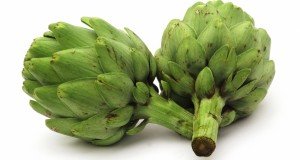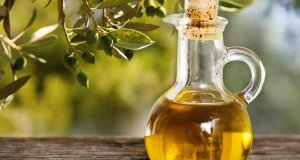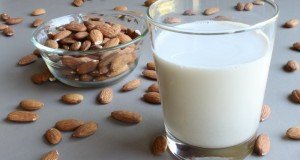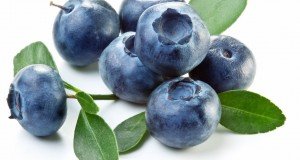12 foods that can lower your blood pressure naturally
(NaturalHealth365) High blood pressure, also known as hypertension, affects one in three Americans and greatly increases the risk of developing life-threatening conditions such as heart attack, stroke, aneurysm and kidney disease.
Risk factors for hypertension include physical inactivity, obesity, tobacco use, stress and poor diet. Yet, conventionally-trained doctors only offer a host of medications to control high blood pressure featuring serious side effects including, weakness, headaches, swelling, flushing and breathing difficulties.
There IS a much safer way to lower blood pressure
Blood pressure can often be lowered with lifestyle changes such as regular exercise, stress management and – most importantly – nutrition. The foods listed below can help you dramatically reduce your blood pressure – naturally. In fact, when used properly, they can equal the effects of blood pressure-lowering drugs. (Of course, you should never stop your prescribed medication without first discussing it with your doctor)
Now, let’s get to the good stuff … and discover nature’s most effective antihypertensive foods.
Cashews and almonds
Both of these tree nuts are packed with magnesium, an essential mineral that plays a key role in supporting healthy blood pressure. Low magnesium levels are associated with high blood pressure, and ramping up magnesium intake can cause blood pressure measurements to be reduced.
A single cup of cashews and almonds gives you a hefty 360 milligrams of magnesium, right in the wheelhouse of the 310 to 420 milligrams per day ‘Recommended Daily Allowance’ advised by the Linus Pauling Institute. Here’s a bonus: eating almonds boost levels of serotonin, a “feel-good” neurotransmitter that may help ease the feelings of stress and anxiety that can contribute to hypertension.
Beetroot
This crimson root vegetable is loaded with nitrates and nitrates. Although many people are accustomed to thinking of as these as dangerous, unnatural food preservatives, both occur naturally within the body. The key factor is which compound they convert to: carcinogenic nitrosamines are produced when nitrates are superheated – as in the case of fried bacon and cigarette smoke.
But when they are converted to beneficial nitric oxide, the result is blood vessels that are dilated and relaxed – resulting in lowered blood pressure. The effect can be dramatic; studies show that beetroot juice can reduce blood pressure by up to 10 mmHg within hours. (If 10 mmHg doesn’t seem very significant, remember: a drop of only 5 mmHg can cause a 14 percent reduction in your chances of fatal stroke – very significant indeed).
Turmeric
A bright yellow cooking spice commonly used in curries, turmeric gets its therapeutic powers from a potent antioxidant and anti-inflammatory compound called curcumin. Research has shown that supplementation with curcumin increases circulating nitric oxide – by as much as 40 percent in four weeks.
One clinical study showed that using 500 mgs of turmeric three times a day caused large blood pressure deceases in participants with inflammation of the kidneys. Because turmeric is not well absorbed by the body, many natural health experts recommend taking it with black pepper to increase bioavailability.
Kale
Kale is something of a nutritional superstar these days, recommended by dietitians and physicians alike. And this green, leafy superfood is rich in not only magnesium but potassium – another essential contributor to healthy blood pressure.
Interesting to note: Magnesium’s blood pressure-lowering effects are enhanced by potassium, causing these two minerals to become even more potent when ingested together.
Kale also contains hefty amounts of vitamin C, which boosts the effect of the two minerals even more. Because kale is rich in this triad of beneficial micronutrients, it has earned its place in the pantheon of natural hypertension fighters.
Fish oil
Fish oil is rich in omega-3 fatty acids, which benefit heart health. So it’s no surprise that fish oil supplementation is an effective natural treatment for high blood pressure. The primary reason behind fish oil’s power is its ideal balance of omega-3 and omega-6 fatty acid, as diets heavy in omega-6 fatty acids can be pro-inflammatory.
Unfortunately, many Americans’ diets leave them with lopsided ratios, skewing towards omega-6’s in an unhealthy proportion of 16 to 1. Reducing your ratio to 4:1 is linked with a 70 percent decrease in cardiovascular disease-related death. Eating more oily fish – while limiting intake of omega-6- laden vegetable oils — can help create balance, reduce inflammation, and lower blood pressure.
Garlic
The secret to garlic’s blood pressure-lowering abilities is its high content of allicin, a sulphur compound released whenever a garlic clove is chopped, crushed or chewed. In a study published in Pakistan Journal of Pharmaceutical Sciences, researchers found that garlic, when consumed daily for six months, worked as well as a pharmaceutical medication to lower blood pressure.
Garlic is a boon to heart health but not to breath — to avoid offensive breath, some natural health experts recommend drinking lemon juice or eating an apple immediately afterwards.
Pomegranate
The flavorful scarlet-colored seeds and juice inside the fruit’s leathery-looking exterior are an excellent source of antioxidant polyphenols, including tannins, anthocyanins and ellagic acid. Researchers think these are the key to pomegranate’s ability to inhibit harmful LDL oxidation and treat hypertension.
In a study published in Atherosclerosis, researchers found that consuming pomegranate juice could decrease the “stickiness” of blood platelets and lower blood pressure. In another study, participants with carotid artery blocks consumed pomegranate juice daily for three years – and experienced lowered blood pressure, along with a 30 percent decrease in atherosclerotic plaques.
Extra-virgin olive oil
As the least-processed form of olive oil, EVOO is a rich source of beneficial monounsaturated fats and antioxidants. In a 2000 study published in Archives of Internal Medicine, researchers found that daily use of about 4 tablespoons of EVOO allowed hypertensive participants to cut dosages of their prescribed blood pressure medicine by 50 percent. In contrast, a study group who were given sunflower oil only cut their dosages by 4 percent.
Stevia
This natural alternative to sugar is not commonly thought of as a remedy for hypertension. But by sensibly substituting stevia for refined sugar, users can combat overweight and obesity that can jack up blood pressure. And stevia’s active constituents – stevioside and rebaudoside A – have been shown in studies to substantially lower blood pressure after three months of use.
Although stevia doesn’t provide the quick and dramatic results of beetroot juice, and blood pressure benefits may take months or years to show, it can be beneficial when used long-term by hypertensive patients in place of sugar.
Vitamin K2
Found in full-fat dairy foods such as butter, cheese and full-fat yogurt, vitamin K2 may help to remove calcium from blood vessels, thereby decreasing arterial stiffness. Research is ongoing, but there is already evidence that consuming high-fat dairy products can improve vascular health, which in turn benefits blood pressure. If eating full-fat dairy is not an option for you, you can take the vitamin as a supplement.
Green tea
Green tea contains large amounts of catechins — polyphenols that support healthy blood pressure. In a meta-analysis of clinical studies published in 2014 in Scientific Reports, the authors credited green tea with causing significant reductions in blood pressure in participants with hypertension.
Like beetroot juice and curcumin, green tea increases the flow of nitric oxide, causing blood vessels to dilate and relax. A 2004 Chinese study published in The Archives of Internal Medicine and involving 1,507 men and women showed that drinking as little as half a cup of green tea a day could lower risk of high blood pressure by close to 50 percent.
Green coffee
If green tea can reduce blood pressure, why not green coffee? As compared to roasted coffee, green — or unroasted — coffee contains larger amounts of the beneficial chlorogenic acid that would otherwise be destroyed in the roasting process. Studies have shown that green coffee extract can reduce blood pressure by as much as 8 percent – but only in those who have high blood pressure in the first place.
If your blood pressure is elevated to unhealthy levels, it’s good to know that relief may be waiting – as near as your refrigerator or kitchen cabinet. We, at NaturalHealth365, hope this list of foods gives you plenty to discuss with your doctor.
References:
https://www.bodybuilding.com/fun/11-foods-scientifically-proven-to-lower-your-blood-pressure.html











